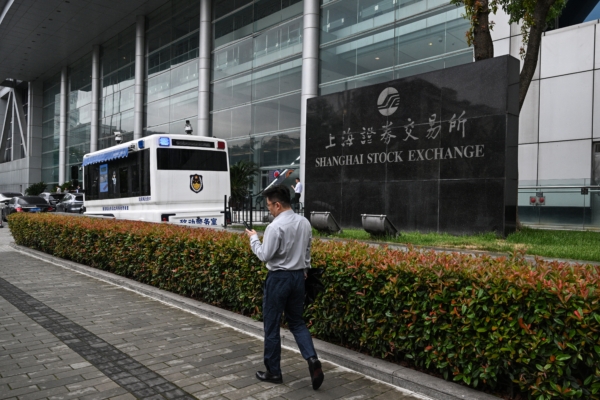Swiss private bank Lombard Odier has fully emptied all of its Chinese asset allocations and shifted towards the United States. Additionally, they hold a pessimistic view towards Beijing’s extensive economic rescue measures.
Last Friday, September 27th, Lombard Odier’s Chief Investment Officer Michael Strobaek revealed in an interview with Bloomberg, “I sold all Chinese assets.”
This move marks a significant decision since he took on the role of Chief Investment Officer at Lombard Odier Bank in November last year, selling all Chinese stocks and bonds managed by the bank for private clients.
Subsequently, he shifted this $249 billion Swiss private bank towards U.S. stocks, U.S. treasuries, and the U.S. dollar.
He stated during the interview that the policy shift had a “significant effect.”
In an effort to stimulate the economy, Beijing introduced a series of large stimulus measures last week. As a result, the Chinese stock market, after a nine-month decline, finally saw its largest surge since 2008.
However, Strobaek does not harbor any regrets.
Previously, Lombard Odier Bank’s Chinese holdings accounted for about 6% of its strategic asset allocation. Strobaek mentioned that this number is now zero.
Lombard Odier Bank manages total assets worth 209 billion Swiss francs, with the majority being private clients, and the asset management department’s assets amounting to around 63 billion Swiss francs.
Strobaek believes that the stimulus policies implemented by the Chinese Communist Party are unlikely to lift the economic outlook.
“I believe it will not have a lasting sustainable impact on the stock market or the economy,” he stated regarding Beijing’s stimulus plan. “This is just a short-term measure aimed at boosting some sentiments. Frankly, whenever the government participates in the capital markets in any substantive way, I usually do not see it as a good sign.”
Last week, the Financial Times reported that according to economists’ estimates, given the current size of the Chinese economy—much larger than in 2008—China needs to inject up to 10 trillion yuan within two years to fully achieve economic recovery, and these funds must flow to households rather than large infrastructure or industrial projects.
During the response to the 2008 financial crisis, the Communist Party of China had announced a “bazooka” fiscal policy, unleashing 4 trillion yuan in government infrastructure investments to rescue the economy.
Lombard Odier’s Senior Macro-Strategist Homin Lee told the Financial Times, “For an appropriate reflation in the Chinese economy, one of two conditions needs to be met: either a significant currency devaluation or very aggressive fiscal stimulus.”
Thus far, progress on either of these conditions has not been observed.

